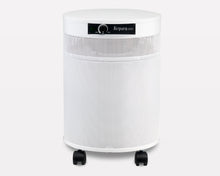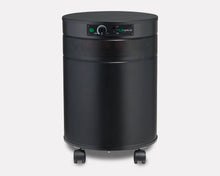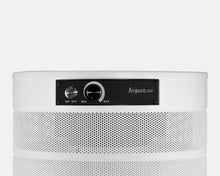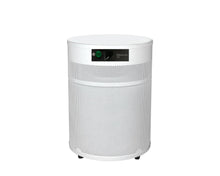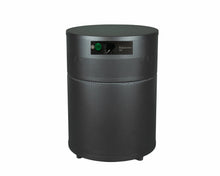Energy Efficiency in Commercial Air Purifiers: Balancing Clean Air with Lower Operating Costs

The Invisible Threat: Why Clean Air is Non-Negotiable in Commercial Spaces
In today's commercial environments, from bustling offices and vibrant retail spaces to critical healthcare facilities and educational institutions, the air we breathe plays a profound role in everything from occupant health and well-being to productivity and operational efficiency. The invisible pollutants – dust, allergens, VOCs, bacteria, and viruses – are constant threats, impacting not only the immediate health of employees and customers but also leading to long-term health issues and reduced cognitive function. This isn't just about comfort; it's about creating environments that foster success and safeguard health.
As Commercial Air Purifiers, LLC, we understand that while the imperative for clean air is clear, so is the pressure to manage operational costs. The perception that superior air quality comes with a prohibitive energy bill is a common concern. But what if we told you that achieving optimal indoor air quality (IAQ) and significantly reducing your energy footprint are not mutually exclusive? This comprehensive guide will explore how energy-efficient commercial air purifiers offer a powerful solution, allowing businesses to breathe easier, both literally and financially.
The Cost of Compromise: Understanding the Problem with Inefficient Air Purification
For years, many businesses grappled with a dilemma: invest in robust air purification and face escalating energy bills, or compromise on air quality to keep costs down. This "either/or" mentality stemmed from older technologies that consumed significant power, often without delivering truly comprehensive air cleaning.
The reality is, poor indoor air quality carries its own hefty price tag. Studies have consistently linked inadequate IAQ to a range of negative impacts. For instance, research published by Harvard University indicates that employees in poorly ventilated environments with high levels of CO2 may experience decreased cognitive function, concentration, and energy. This directly translates to reduced productivity, increased absenteeism due to illness, and a higher risk of employee turnover as individuals seek healthier work environments. The U.S. Environmental Protection Agency (EPA) also highlights that indoor pollutant levels can be two to five times higher than outdoor levels, largely due to insufficient ventilation in modern, energy-efficient building designs.
Beyond human health, inefficient air purification can also lead to increased maintenance costs for HVAC systems. As particles and pollutants are removed from the air, there is less buildup on HVAC equipment, which can reduce the frequency and cost of maintenance. Conversely, a system that isn't effectively capturing airborne contaminants will see those contaminants accumulating in ductwork and on system components, leading to decreased efficiency and premature wear. This creates a cycle of higher energy consumption, frequent repairs, and ultimately, a larger operational expenditure for businesses.
The Dawn of a New Era: Energy-Efficient Air Purification as a Core Business Strategy
At Commercial Air Purifiers, LLC, we believe that energy-efficient commercial air purifiers are not just an add-on but a fundamental component of a modern, responsible, and cost-effective business strategy. The advancements in air purification technology have made it possible to achieve exceptional air quality while simultaneously minimizing energy consumption.
The Science Behind Energy-Efficient Filtration
The core of an energy-efficient air purifier lies in its ability to maximize Clean Air Delivery Rate (CADR) per watt of energy consumed. This involves a combination of innovative fan motor technology, optimized airflow design, and advanced filtration media.
-
EC Motors and Variable Speed Drives: Traditional AC motors consume a consistent amount of power, regardless of the fan speed. Energy-efficient commercial air purifiers, however, increasingly utilize Electronically Commutated (EC) motors. These motors are significantly more efficient, converting a higher percentage of electrical input into mechanical output. Furthermore, paired with variable speed drives, they allow the air purifier to adjust its fan speed precisely to the actual air quality needs, rather than running at maximum capacity constantly. This "on-demand" operation dramatically reduces energy waste.
-
Optimized Airflow Dynamics: The design of the air purifier's internal pathways and fan blades plays a crucial role in minimizing resistance to airflow. Less resistance means the motor doesn't have to work as hard to move the same volume of air, directly translating to lower power consumption. Our engineers at Commercial Air Purifiers, LLC, are constantly refining these designs to ensure maximum CADR with minimal energy input.
-
Advanced Filtration Media: While HEPA filters remain the gold standard for particle removal, new advancements in filter media are focusing on maintaining high filtration efficiency with lower pressure drop. A lower pressure drop means less energy is required to push air through the filter. For example, some modern filters are designed with larger surface areas or unique pleat configurations to allow for greater airflow at reduced fan speeds.
-
Smart Technology and Automation: Many energy-efficient commercial air purifiers are equipped with smart sensors that monitor indoor air quality in real-time. These systems can automatically adjust fan speeds based on detected pollutant levels, ensuring that the unit only uses the energy necessary to maintain optimal air quality. This intelligent operation eliminates guesswork and prevents unnecessary energy expenditure. Some advanced systems can even integrate with existing building management systems (BMS) for centralized control and optimization, further enhancing energy savings.
The ENERGY STAR® Advantage
When considering commercial air purifiers, looking for the ENERGY STAR® label is a critical first step. This certification, administered by the U.S. Environmental Protection Agency (EPA), signifies that a product meets strict energy efficiency guidelines. According to Natural Resources Canada, an ENERGY STAR® certified room air purifier uses 25% less energy, on average, compared to a standard model, translating to significant annual electricity savings.
The ENERGY STAR® certification process for air purifiers evaluates products based on their CADR per watt, ensuring that efficiency is directly tied to performance. This means you're not just getting a low-power device; you're getting a powerful air purifier that achieves its cleaning goals with less energy.
Real-World Impact and Case Studies
The benefits of energy-efficient commercial air purifiers are not merely theoretical. They are being realized by businesses across various sectors:
-
Office Environments: Consider a typical office building. Employees spend countless hours indoors, and maintaining optimal IAQ is crucial for productivity and well-being. By installing energy-efficient commercial air purifiers, one mid-sized office building we consulted was able to reduce its overall HVAC-related energy consumption by 15% in the first year alone, while also reporting a noticeable improvement in employee comfort and a reduction in seasonal allergy complaints. This was achieved by strategically placing units to supplement the existing HVAC system, targeting high-traffic areas and common pollutant sources.
-
Retail Spaces: In retail, creating an inviting and healthy atmosphere can directly impact customer experience and sales. A regional chain of boutiques implemented energy-efficient air purifiers. Their internal feedback showed a positive correlation between improved air quality and increased customer dwell time, as well as a reduction in airborne dust, which in turn meant less frequent cleaning of merchandise. The store manager noted, "We've seen a real difference. The air feels fresher, and customers seem to linger longer. Plus, our electricity bill for air purification has been surprisingly low."
-
Healthcare Facilities: For healthcare settings, air quality is paramount for patient and staff safety. While often requiring specialized filtration, energy-efficient models can still play a vital role in waiting areas, administrative offices, and common spaces. A small clinic utilized low-power consumption air filters in their waiting rooms, contributing to a healthier environment while adhering to strict budget constraints. The reduced energy demand of these units allowed them to allocate more resources to other critical areas of patient care.
Practical Steps and Recommendations for Businesses
As Commercial Air Purifiers, LLC, we offer the following recommendations to help your business embrace energy-efficient air purification:
-
Assess Your Needs: Before investing, conduct a thorough assessment of your space. Consider the square footage, ceiling height, existing ventilation, and potential sources of indoor air pollutants (e.g., foot traffic, cleaning chemicals, office equipment). This will help determine the appropriate CADR and features required.
-
Prioritize ENERGY STAR® Certified Models: Always look for the ENERGY STAR® label. This ensures that the product has met rigorous efficiency standards and will provide significant energy savings over its lifetime. Our product specialists at Commercial Air Purifiers, LLC, can guide you through our range of ENERGY STAR® certified options.
-
Understand Filter Types and Lifespan: While HEPA filters are essential for capturing microscopic particles, activated carbon filters are crucial for removing odors and volatile organic compounds (VOCs). Consider units with multi-stage filtration for comprehensive air cleaning. Always inquire about filter lifespan and replacement costs. Longer-lasting filters, even if slightly more expensive upfront, can lead to lower operating costs due to less frequent replacements and reduced maintenance labor.
-
Embrace Smart Features: Opt for air purifiers with intelligent sensors and automatic modes. These features optimize performance based on real-time air quality, reducing unnecessary energy consumption. Wi-Fi connectivity and integration with building management systems can further enhance control and efficiency.
-
Regular Maintenance is Key: Even the most energy-efficient air purifier will underperform and consume more energy if not properly maintained. This includes:
-
Regular Filter Replacement/Cleaning: This is the most crucial step. Clogged filters restrict airflow, forcing the unit to work harder and consume more power. Follow manufacturer guidelines for replacement intervals. For reusable pre-filters, clean them regularly.
-
Cleaning Exterior and Vents: Dust accumulation on the exterior and around air intake/exhaust vents can impede airflow. Wipe these down regularly with a soft, damp cloth.
-
Monitoring Indicator Lights: Pay attention to filter replacement indicators and other alerts. Addressing issues promptly ensures optimal performance and energy efficiency.
-
As highlighted by Moore Mechanical, regular filter maintenance keeps your air purifier running efficiently and your indoor air clean.
-
-
Consider Bi-Polar Ionization and Hybrid Systems: Newer technologies, like bi-polar ionization, are showing promise in enhancing air cleaning efficiency while reducing energy consumption. A peer-reviewed study published in the May 2025 issue of the ASME Journal of Engineering for Sustainable Buildings and Cities concluded that combining bi-polar ionization technology with a low-MERV media filter can achieve HEPA-level air cleaning performance with significantly less energy due to lower airflow restriction. This innovative approach presents a compelling opportunity for businesses to achieve stringent air quality demands without compromising operational efficiency. As Commercial Air Purifiers, LLC, we stay abreast of these advancements to offer cutting-edge solutions.
The Future of Healthy, Cost-Effective Commercial Spaces
The era of choosing between clean air and affordability is over. Energy-efficient commercial air purifiers represent a pivotal shift, allowing businesses to create healthier, more productive environments while simultaneously realizing substantial cost savings. By understanding the underlying technology, prioritizing certified products, and committing to proper maintenance, you can transform your commercial space into a beacon of clean air and fiscal responsibility.
At Commercial Air Purifiers, LLC, our commitment is to empower businesses with the best air purification solutions on the market. We believe that investing in superior indoor air quality is not an expense, but an investment in the health of your occupants, the longevity of your assets, and the sustained success of your operations. Choose smart, choose efficient, and let us help you breathe new life into your commercial space.
Author Bio:
Commercial Air Purifiers, LLC is a leading provider of advanced air purification solutions for commercial and industrial applications. With decades of collective experience in indoor air quality management and a deep understanding of filtration technologies, our team is dedicated to bringing cutting-edge, energy-efficient products to market. We pride ourselves on offering expert advice, comprehensive support, and a commitment to helping businesses achieve optimal indoor air quality while minimizing their environmental footprint and operating costs. Our insights are rooted in extensive research, hands-on product evaluation, and direct customer feedback from diverse commercial settings.
Publication Date: July 25, 2025
FAQ Section
Q: How do energy-efficient air purifiers save money beyond electricity costs?
A: Energy-efficient air purifiers contribute to savings by reducing strain on HVAC systems, leading to lower maintenance costs and extending the lifespan of your existing heating, ventilation, and air conditioning equipment. Additionally, by improving indoor air quality, they can reduce absenteeism and increase productivity, offering intangible but significant financial benefits.
Q: What is CADR, and why is it important for energy efficiency?
A: CADR stands for Clean Air Delivery Rate. It measures how quickly an air purifier removes pollutants from a room. For energy efficiency, it's crucial to look at CADR per watt. An ENERGY STAR® certified air purifier will have a high CADR relative to its power consumption, meaning it cleans the air effectively without using excessive electricity.
Q: Can a single commercial air purifier clean an entire large commercial space?
A: For large commercial spaces, a single air purifier is often insufficient. Effective air purification typically involves a strategic deployment of multiple units, often integrated with existing HVAC systems, to ensure comprehensive coverage and optimal air changes per hour (ACH). A professional assessment can help determine the ideal setup for your specific needs.
Q: Are there different filter types, and how do they impact energy consumption?
A: Yes, common filter types include HEPA (High-Efficiency Particulate Air) for particles, and activated carbon for odors and VOCs. While filter quality impacts efficiency, the main energy consideration is the pressure drop across the filter. Filters designed for lower pressure drop require less energy from the fan to move air, contributing to overall energy efficiency. Regular cleaning or replacement of filters is also crucial, as clogged filters increase pressure drop and energy use.
Q: What is the typical lifespan of an energy-efficient commercial air purifier?
A: The lifespan of an energy-efficient commercial air purifier varies depending on the model, usage, and maintenance. However, high-quality units from reputable manufacturers, especially those with durable EC motors, are designed for longevity, often lasting many years with proper care. Regular maintenance, particularly timely filter replacements, is key to maximizing the unit's operational life and maintaining its energy efficiency.

